Cabbage, rich in vitamins and minerals, which was cultivated in ancient Greece, today occupies about 20 - 30% of the cultivated area of a suburban or personal plot. Among the species diversity, cabbage, namely, “Glory” cabbage, is very popular in the territory of the former Rus.
Material Content:
- 1 Description and characteristics of varieties 1305 and Gribovskaya 231
- 2 The main differences between varieties 1305 and Gribovskaya 231
- 3 How and when to sow seeds for seedlings and subsequent care
- 4 Planting seedlings in open ground
- 5 How to care for cabbage Glory?
- 6 Protection against diseases and pests
- 7 Harvesting and storage
Description and characteristics of varieties 1305 and Gribovskaya 231
Cabbage “Slava” was loved by many gardeners for its high yield, which can reach 12.5 kg per 1 m2, good immunity to major diseases and excellent commercial qualities, including transportability.

There are 2 varieties of the Glory variety:
- White cabbage "Glory 1305". The variety is represented by plants with a growing period of 110 - 120 days, forming round and slightly flattened heads of medium density with a weight of 4 - 4.5 kg. Resistant to cracking and harmful organisms. The variety can be cultivated on different soils, showing a yield of 10 kg per 1 m2.
- "Gribovskaya 231". Mid-season variety with head of cabbage, painted in dark green color, weighing 3 kg. The average yield is 7.5 - 8 kg per 1 m2. It has good transportability due to its fairly dense structure.
The main differences between varieties 1305 and Gribovskaya 231
The cultivation of cabbage seedlings “Glory 1305”, as well as further planting and care do not differ from the cultivation technology “Gribovsky 231”.
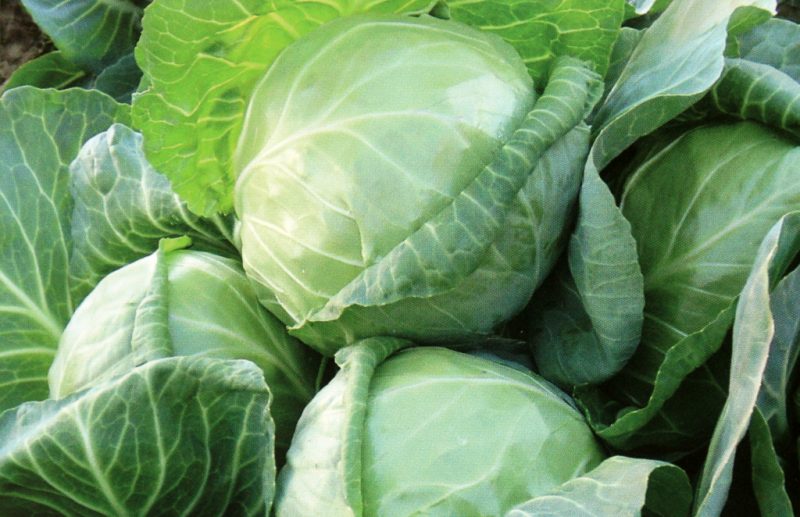
Nevertheless, the variety "1305" has a number of differences from the aforementioned variety according to the catalog of the description of varieties:
- Growing season.Grade "Gribovskaya 231" must be harvested 2 weeks earlier.
- Productivity "Glory 1305" demonstrates greater productivity due to larger heads of cabbage.
- Resistance to cracking and disease. “Glory 1305” has a higher degree of stability.
- Storage. Due to the denser structure, vegetables of the Gribovskaya variety are stored longer.
How and when to sow seeds for seedlings and subsequent care
Cabbage "Glory" can be grown both in seedling and in seedling method. But for guaranteed harvest, it is recommended to give preference to the first.
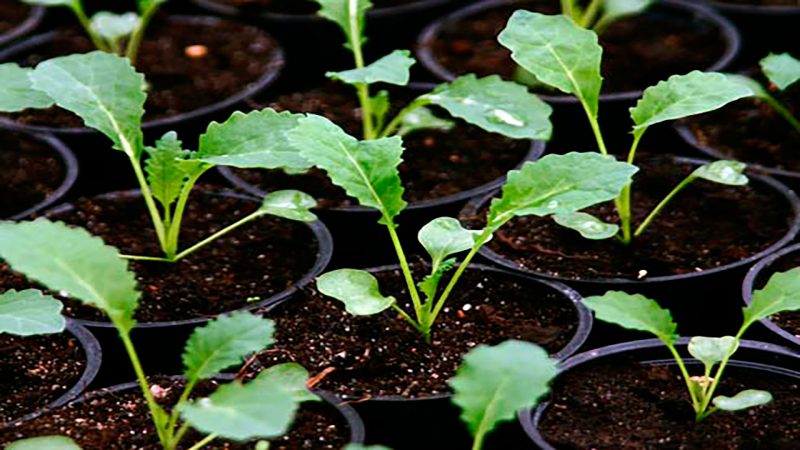
Sow the seeds of a vegetable crop for seedlings in the first half of April in a container for seedlings filled with loose, fertile soil, according to the following scheme:
- Seeds are kept in warm water for about 20 minutes, and then immersed in cold water for 2 to 3 minutes, which helps to strengthen the immunity of future plants.
- Seeds are distributed over a plentifully moistened substrate and sprinkled with a 1 cm soil layer.
- Crops are covered with a film.
- When shoots appear, which is noted on day 5, the film is removed, the soil is poured with a weak solution of manganese, and the container moves to a cool place with a temperature of 6 - 10 ° C.
- After the formation of the first true leaf, the temperature regime changes: during the day it is 14 - 18 ° C, at night - 7 - 10 ° C.
- At the same time, if the seeds were densely sown, then dive into individual pots, the day before which the seedlings are abundantly watered.
- To seedlings develop well, they organize a long daylight hours at 14 - 15 hours with the help of phytolamps.
- After the formation of the second true leaf, fertilizing with the Nitroammofosk complex mineral fertilizer is carried out.
- Before planting in open ground, the seedlings undergo hardening and adaptation to future growing conditions.
Planting seedlings in open ground
To collect a good crop of large heads of cabbage, it is necessary to properly carry out the planting work of the stronger seedlings.
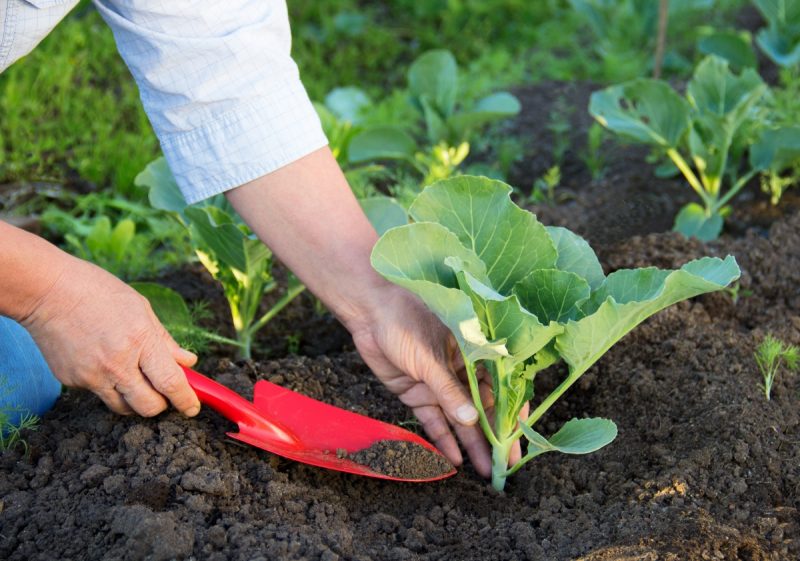
Loam or slightly clay soils with a slightly acidic reaction are suitable for the Slava cabbage. The site should be well lit throughout the day. When planning the placement of cabbage, it should be remembered that all cruciferous crops are unacceptable predecessors for it. The soil is prepared in the fall: the soil is dug up to a depth of 20 cm, and in the spring it is harrowed to cover moisture.
The signal for planting seedlings in open ground is the formation of 4 - 9 leaves and the seedlings reaching a height of 15 - 20 cm, which is usually observed in the second half of May.
When landing, the following actions are performed:
- At the prepared site, holes are dug out according to a 50x60 cm pattern with dimensions slightly exceeding the root system of planting material.
- A small amount of peat, humus, sand and azofoska is placed in the recesses, after which the mixture is poured with water.
- An earthen lump with seedling roots is lowered into the water in such a way that the cotyledon leaves are buried.
- Seedlings sprinkled with dry soil.
How to care for cabbage Glory?
Despite the undemanding cabbage “Glory”, which captivated the hearts of many gardeners with this feature, it needs some care to get a stable crop.

- Frost protection. If frost is expected, which is typical for spring in the northern regions, it is recommended to water the beds abundantly and cover with a film.
- Watering. Cabbage is a moisture-loving crop that needs additional watering during a period of active growth. Humidification should be carried out after drying of the topsoil, so as not to flood the plants. 20 days before harvesting, watering stops.
- Loosening and weeding. After moistening, the beds should be loosened to provide the necessary friability of the soil structure and air access to the roots that feed the vegetable. Simultaneously with loosening, weed vegetation is removed, the presence of which adversely affects the development of heads of cabbage.
- Top dressing.Initial feeding is carried out at the seedling growth stage. When the active formation of heads in the garden beds begins, the soil is enriched with phosphorus-potassium fertilizers with the addition of wood ash, which helps to strengthen the plant's immunity. It is recommended to repeat top dressing after 10 days.
Protection against diseases and pests
Cabbage "Glory" is resistant to harmful organisms. However, when buying low-quality seed at the seedling stage, a black leg may begin to develop. A fungicide spray will help to cure a fungal disease.
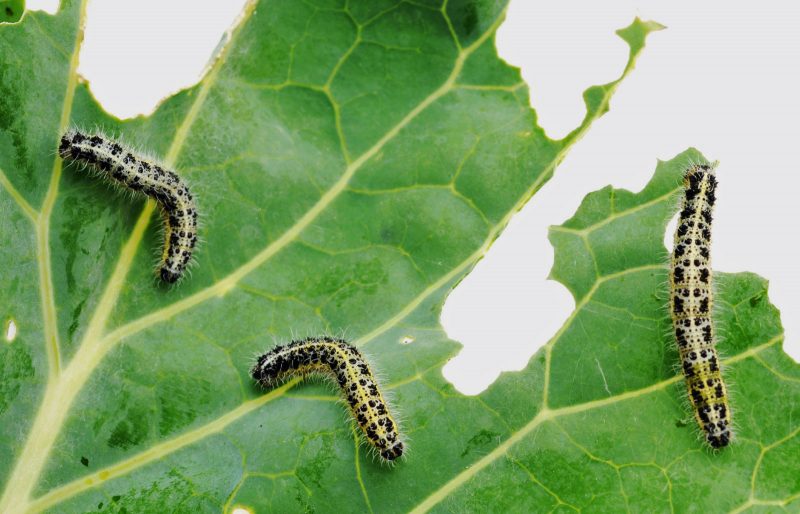
In the case of rainy weather, thickened plantings and excessive watering, manifestations of gray rot are sometimes observed, which is also treated with a pesticide in the early stages.
Among pests, this cabbage variety likes cabbage moth, which lays larvae, which subsequently leave peculiar patterns on the leaves. To control the caterpillars, it is recommended to treat the plantings with an insecticide.
Harvesting and storage
Lowering the temperature to -2 ° C signals the need to start harvesting.
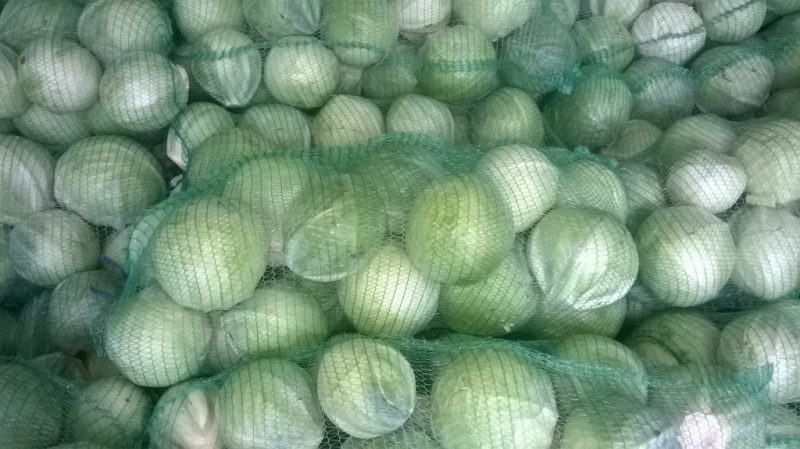
Cabbage is dug up with the root so that it is possible to discard rotten specimens that are not suitable for storage. Healthy heads of cabbage are dried during the day, after which they leave only 2 cm of stump. Dried vegetables are lowered into the cellar, where they are laid out in a single layer on shelves or pyramidally stacked in wooden boxes.
So, the cabbage “Glory” won the love among farmers for good reason. After all, it combines high productivity, unpretentiousness and good commercial qualities.












